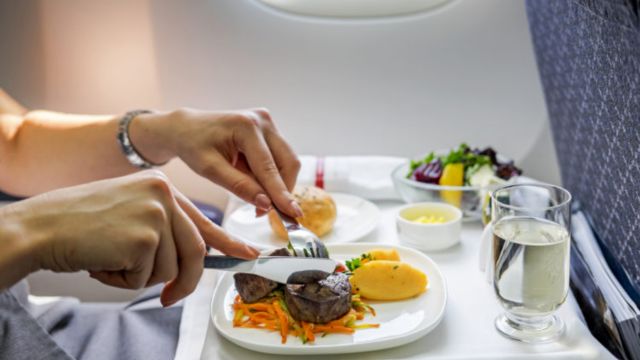When you travel by airplane, you might have a lot of questions and concerns about bringing food with you. A question that often comes up is whether you can bring edible items on an airplane. Understanding this information will help you prepare effectively for your next trip and prevent any unnecessary difficulties on the day of travel. Before you purchase your tickets, make sure to contact your airline in advance. As you do that, there are some general guidelines that apply to air travel. Reviewing them will also help you when you pack.
Can You Bring All Types of Edible Items on a Plane?
No, you are not allowed to consume certain types of food due to specific conditions or rules. According to the rules of the Transportation Security Administration (TSA), passengers are not allowed to bring cannabis-based edibles.
Here are some specific examples of food items that you cannot bring on a plane:
- Large quantities of liquids or gels (more than 3.4 ounces)
- Raw or undercooked meat, poultry, or seafood
- Live lobsters or other shellfish
- Alcohol (unless it is in a checked bag and meets the TSA’s alcohol guidelines)
- Spices or herbs that are flammable or explosive
- Food items that are considered a security risk (e.g., cakes or pies that could be used to hide weapons)
Can I Carry Edible Mushrooms on a Plane?
Along with other foods, visitors are not allowed to bring mushrooms that can be eaten. Also, a number of other types of mushrooms, such as the ones below, will not be allowed:
- Maitake
- Shiitake
- Reishi
- Chanterelles
- Agaric
Aside from that, you won’t be able to bring dried mushrooms either. There are ways to ship them, though. The following are part of these:
- Keep dried mushrooms in a container that will not let air in.
- Don’t bring dried fruits, herbs, or seeds.
- The most of these mushrooms you can bring is 1 kg per registered passenger.
- Before you put them in your bag, you have to put them in a paper bag.
- Only the cargo hold can be used to ship these things.
Related: Can you bring Glass Items on a Plane?
Types of Food bring on Plane
Fortunately, the Transportation Security Administration (TSA) allows a variety of food items to be brought on board, ensuring that we can stay nourished and satisfied during our journeys.
Solid Food Items
Solid food items are generally subject to fewer restrictions than liquid or gel-based foods, offering a wide range of options to pack for your flight. Here’s a comprehensive list of solid food items you can bring on a plane:
Bread and Bakery Items: Indulge in your favorite bread, crackers, cookies, muffins, or pastries. Just ensure they are securely packaged to prevent crumbs from scattering.
Fruits and Vegetables: Pack a refreshing and healthy snack of fresh fruits and vegetables like apples, oranges, bananas, carrots, celery, or cucumbers.
Sandwiches, Wraps, and Salads: Enjoy a satisfying meal with sandwiches, wraps, or salads prepared with non-liquid ingredients. Wrap them securely in plastic wrap or aluminum foil to maintain freshness.
Dried Snacks: Keep hunger pangs at bay with dried fruits, nuts, trail mix, granola bars, or beef jerky. These non-perishable snacks are perfect for long flights.
Liquid and Gel-Based Food Items
Liquid and gel-based food items are subject to stricter regulations due to security concerns. The TSA’s 3-1-1 rule outlines the restrictions for carrying liquids, gels, and aerosols:
Container Size: All liquid or gel containers must be 3.4 ounces (100 milliliters) or smaller.
Clear Bag: Place all liquid or gel containers in a single clear, quart-sized (one-liter) plastic bag.
One Bag per Person: Each passenger can only carry one quart-sized bag of liquids or gels.
What are the Packing Tips for Food on a Plane?
To ensure a smooth and hassle-free experience at the security checkpoint, follow these packing tips:
Organize Your Food: Pack solid food items in separate containers or bags to prevent them from mixing.
Wrap Liquids Securely: Wrap liquid containers tightly to prevent leaks.
Place Food in Carry-on Bag: Pack most food items in your carry-on bag, except for large quantities of liquids or perishable items that may require checked luggage.
Declare Food Items: Inform the TSA officer about any food items you are carrying, especially if they contain liquids or gels.
Separate Food for Screening: If requested, be prepared to separate your food items from your carry-on bag for X-ray screening.
Conclusion
Every country and state has different rules about what you can bring on a plane that you can eat. But most countries and planes don’t let you bring food. To avoid problems, you also need to read and understand the TSA’s rules.






[…] Related: What types of Food can you bring on a Plane? […]